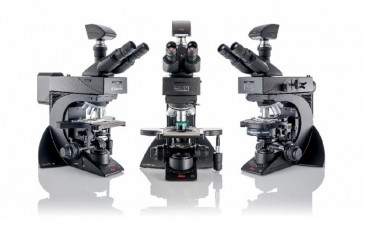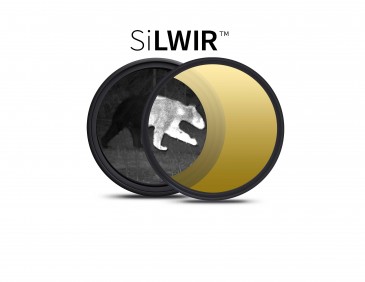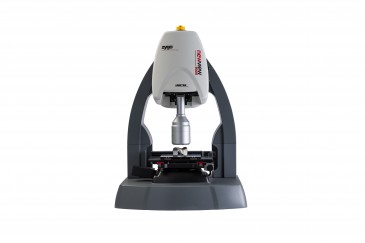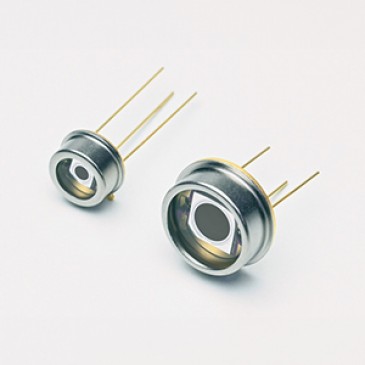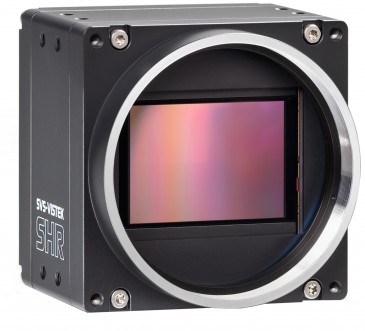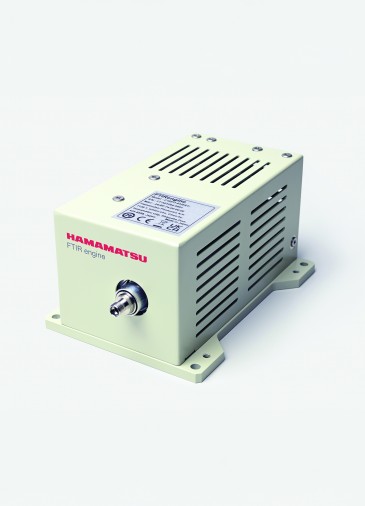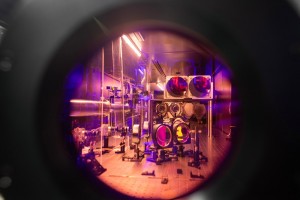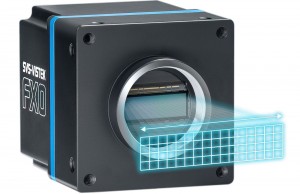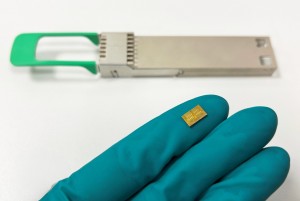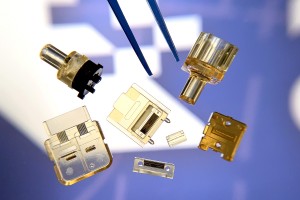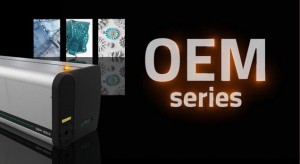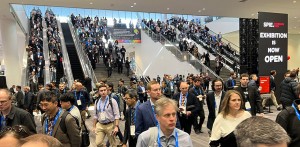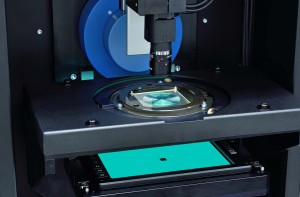
Early virtual reality (VR) headsets were large, bulky devices that were uncomfortable and impractical to use for extensive periods of time. Recently, however, new breeds of VR headset have emerged that can be worn on the head like a pair of glasses. Such lightweight designs enable users to experience virtual 3D worlds without the inconvenience of their earlier counterparts.
Developing a lightweight virtual reality headset that can display images on a high-definition screen in front of the eyes, however, is not a trivial matter. Any contemporary headset should be capable of providing a wide field of view to enable a user to experience as realistic 3D immersive experience as possible. Hence the lens inside the headset that collimates the light from the display onto the human eye plays a crucial role.
While a lightweight, thin lens might at first appear to be the optimum solution for any VR headset, the focal distance from a thin lens to the display will need to be longer than if a thicker lens is employed for the task. Hence the headset itself will consequently be relatively large. A thick lens, on the other hand, with a shorter focal length, has the disadvantage that it may be heavier, adding to the weight of a headset.
Advantages of the Fresnel lens
For these reasons, many headset designers are now making use of Fresnel lenses in their headset designs. A Fresnel lens can be made substantially thinner than a comparable conventional lens because of the way that it is designed. In place of a continuous surface, a Fresnel lens sports a set of surfaces of the same curvature with discontinuities between them.
Although Fresnel lenses can capture more oblique light from a light source, such lenses also come with their own drawbacks. Due to the discontinuities between the individual facets of the lens, some light can be scattered, a process that then reduces contrast.
To enable design engineers to evaluate the characteristics of such Fresnel lenses in prototype headsets, engineers at Trioptics have recently developed a new test station dubbed the ImageMaster Lab VR specifically for the task.
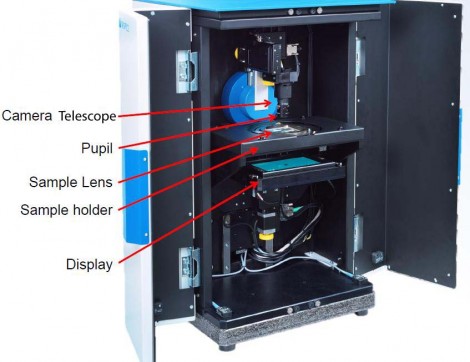
The Trioptics ImageMaster Lab VR system can be used to evaluate the effectiveness of Fresnel lenses in VR headsets.
According to Dr. Stefan Krey, Managing Director at Trioptics, the system itself models the way in which the human eye would view the collimated light from the Fresnel lens in hardware and then characterizes in software how the lens affects the quality of the image.
In the human eye, light enters through the pupil and is focused by a crystalline lens onto the retina. The amount of light passing to the retina is determined by the iris, which controls the diameter and size of the pupil. The eyeball itself is moved by a set of muscles which enable objects of interest to be tracked.
Simulating the functions of the biological eye
The ImageMaster Lab VR system comprises an “eye simulator”, which performs many of the functions of the biological eye itself. In use, a sample VR lens to be evaluated is placed on a sample holder in the tester. Collimated light from a test pattern displayed on a high contrast VR device, which is also mounted inside the unit, then passes through the VR lens in the sample holder into the eye simulator.
“The eye simulator itself comprises a moveable camera fitted with an objective lens that captures and focuses the light from the test images produced by the Fresnel lens onto a CCD imager. While the objective lens in the camera simulates the biological lens found in the eye, the CCD imager mimics the retina of the eye itself. By varying the aperture setting of the camera, it is also possible to mimic the function of the iris,” said Dr. Krey.
Of course, a VR headset must be designed to produce a pleasing, realistic and uniform image for a wide variety of individuals. Hence the designers of the lens must account for any physiological deviations between the eyes of many users. To accommodate differences, such as variations of distance from the pupil of the eye to the lens, the system enables designers to capture images from the test pattern on the display as they vary the lateral position between the imager and the sample lens within a specific boundary known as the “eyebox”.
During a VR experience, it is very common for the eye to move rapidly across the entire field of view of the display. Therefore, developers must also ensure that the lens in the VR system will ensure that the image viewed by the eye across the entire field of view will be as sharp and realistic as possible. To be able to cover the full field of view, the CCD camera can be pivoted, effectively changing the object angle of the system.
The ImageMaster Lab VR system comprises an “eye simulator”, which performs many of the functions of the biological eye itself.
Aware that the system should also be universal enough to accommodate many different sorts of VR headset designs with a variety of form factors, the Image Master VR system allows engineers to vary the distance from the VR display to the lens and the distance of the VR lens to the eye.
“In a typical use case, many images would be captured by the CCD camera in the ImageMaster Lab VR system to enable lens designers to determine the performance of the prototype lens. During such experiments, designers would typically capture one set of images from the lens across its field of view. Next, the effective vertical and horizontal distance of the CCD “eye” from the display would be varied and the experiment repeated as any times as desired to identify the configuration with optimum performance, said Dr. Krey.
Evaluating lens in various scenarios
Capturing numerous images enables lens designers to thoroughly evaluate the quality of the image produced by the lens in a variety of scenarios. Because all the settings of the system are computer controlled, it is then possible to create a log detailing the effectiveness of each different lens design at numerous individual settings.
When determining the performance of a lens, there are many important measurement parameters that must be taken into account. And it is here that the company´s ImageMaster Lab VR measurement software comes into play. Having captured a number of images using the virtual eye, the software can be used to characterize the results.
According to Trioptics´ Dr. Krey, there are a number of key parameters that can be characterized by the software in the system. Two of the most important of these, however, are resolution and contrast, which are commonly determined by measuring the modulation transfer function (MTF) of the lens. The MTF measured by the system provides an indication of the ability of the lens to transfer contrast at a specific resolution from the object to the image.
Compensating for lens aberrations
One characteristic common to typical VR lenses is that they produce what is known as barrel distortion. And Fresnel lenses, in general, might have positive (pincushion) or negative (barrel) distortion. But because the system can measure the barrel distortion of the lens, headset designers can then use the results to determine the optimum way to “counter distort” the image projected by the display in software to compensate for the lens aberration.
More simple lens and Fresnel lens systems also produce chromatic aberration, an effect caused by the inability of the lens to focus all the wavelengths (colours) of the light spectrum on the same plane, such as the image sensor or retina. The chromatic aberration manifests itself as "fringes" of color along boundaries that separate dark and bright parts of the image. Determining the chromatic aberration hence enables lens designers to ascertain how best to modify a lens and its material to minimize the divergence of light waves from it.
Minimizing the effect of stray light
Lastly, lens designers must be able to effectively characterize the veiling glare, or stray light, produced by the lens as the result of the faceted and discontinuous nature of the Fresnel lens itself, damages or impurities on the lens surface or reflections from the lens housing. This unwanted stray light typically produces ghost reflexes in image plane that can reduce image contrast. By measuring the effects that different parameters have on the veiling glare, lens designers can minimize the effects in their VR headset design.
The ImageMaster Lab VR system is intended as a research tool to enable lens designers to evaluate the characteristics of prototype VR lenses. For manufacturing purposes, Trioptics additionally provides a system that is optimized for the production environment. This system is less flexible than the ImageMaster Lab VR, but the ImageMaster PRO VR Series provides the ability for fast mass production testing of VR lenses.
Written by David Wilson, Senior Editor, Novus Light Technologies Today



































 Back to Enlightening Applications
Back to Enlightening Applications